What Is Hyaluronic Acid?
Hyaluronic acid (HA), along with its cousin sodium hyaluronate, is an immensely popular ingredient in skincare and makeup. It’s also naturally found in the body. Most of it dwells in the extracellular matrix, the scaffold which holds up the cells of your skin. Hyaluronic acid is found in both the epidermis and the deeper dermis, where it’s important in hydration, metabolic processes, skin repair, and protection against free radical and UV damage.
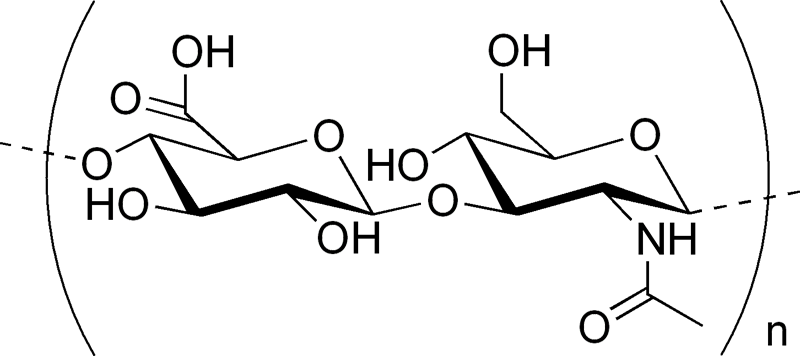
Hyaluronic acid is a glycosaminoglycan, a class of chemicals that can hold onto water very efficiently, due to its very polar nature. Hyaluronic acid keeps skin firm and plump this way. It’s been thought that decreased hyaluronic acid levels led to the thinner and drier look of aged skin. However, the research currently suggests that the amount of hyaluronic acid in the skin doesn’t actually decrease with age, but it does redistribute with both natural and environmentally-induced skin aging.
What Does Hyaluronic Acid Do in Skincare?
In skincare, hyaluronic acid is mostly used for its incredible ability to hold onto moisture: it’s included in moisturisers and serums as a humectant ingredient. Humectants hydrate the skin, and since one of the effects of dehydrated skin is fine lines and wrinkles, this can make your skin look dramatically younger and less tired. Another popular and cheaper humectant moisturiser is glycerin, but glycerin can feel sticky and heavy. Hyaluronic acid is frequently combined with glycerin to make it feel lighter on the skin.
The hyaluronic acid used in skincare isn’t all the same. It’s usually divided into different sizes: there’s high molecular weight hyaluronic acid, which has a larger molecular size, and low molecular weight hyaluronic acid, which is formed by chopping it into smaller fragments. “Sodium hyaluronate” usually indicates smaller fragments than “hyaluronic acid”, but even within those names there are a range of molecular sizes. The main significance of the different sizes is that smaller molecules are able to penetrate the skin better than larger molecules, which means that low molecular weight hyaluronic acid can hydrate deeper than high molecular weight hyaluronic acid, which holds onto water at the surface of the skin.
There’s some debate on how low molecular weight hyaluronic acid can act as an inflammatory signal and therefore be harmful, but it’s important to remember that inflammation isn’t always a bad thing. Studies on skin and skin cells have found that low molecular weight hyaluronic acid can improve the skin’s ability to repair itself, its defense against microbial attack and help with conditions like seborrheic dermatitis. Hopefully there’ll be more research into its effects on normal skin too.
However, don’t be fooled into thinking that applying hyaluronic acid on your skin can help replenish your natural stores! Unfortunately, even low molecular hyaluronic acid can only penetrate into the lower epidermis. It’s a fantastic hydrating ingredient, and hydration is fantastic for improving how well your skin functions. There’s also a bit of anti-inflammatory and antioxidant activity, but the vast majority of its benefits are to do with hydration.
Hyaluronic acid can also come from different sources. The two main sources are biofermentation (made by bacteria) and… rooster combs, which contain about 15 times as much hyaluronic acid as human skin. Yeah, those dangly things on chickens. If you’re vegetarian, you’ll want to look into the source of the hyaluronic acid in your products.

Other Uses of Hyaluronic Acid
Apart from skincare, you’ll find dehydrated hyaluronic acid spheres in makeup as well, particularly in skin-smoothing primers. The dry spheres are mixed into a water-free (anhydrous) formula. The product is applied on the skin and sinks into any fine lines and wrinkles. The hyaluronic acid spheres start grabbing onto any water molecules it touches from the skin and the air, and the swelling effect hides lines.
In other areas of skincare, chemically modified hyaluronic acid is also used in injectable fillers like Juvéderm Restylane and Voluma to plump up deep wrinkles. It’s also the basis of Macrolane, a controversial filler that’s been used for breast and buttock enhancement. Oral supplements of hyaluronic acid are sold in nutrition stores but there’s no demonstrated benefits yet (it’s questionable whether hyaluronic acid survives digestion, and can make it from the digestive tract to the skin).
Hyaluronic Acid Product Recommendations
So far, my favourite hyaluronic acid product has to be For Beloved One Hyaluronic Acid GHK-Cu Moisturising Serum (click for full review), which has made my skin unbelievably plump and bouncy. I can also vouch for Indeed Labs Hydraluron (review). I haven’t personally tried Hylamide Low-Molecular HA Rehydration Booster but I’ve heard good things about it. Other budget options with great reviews are Timeless Hyaluronic Acid and Hada Labo Rohto Gokujyn Hyaluronic Acid Lotion.
Corrections
2025-11-25: Removed 1 gram of hyaluronic acid can hold onto 6 litres of water – this is from an Int J Toxicol article authored by members of the Cosmetic Ingredient Review panel. The source they cite has no reference for this claim which is, in hindsight, pretty questionable to begin with.
This is a nice example of how “fun fact” style claims in the introductions of peer-reviewed articles aren’t necessarily reliable, even if the journal and authors are well-respected – myths are rampant throughout science! It’s worth being skeptical especially if the claim is tangential to the authors’ expertise, and especially if they’re not directly relevant to the main topic of the article. This article by Borchers and Pirrung in J Cosmet Sci breaks down this myth in more detail.
References
S Gariboldi et al., Low molecular weight hyaluronic acid increases the self-defense of skin epithelium by induction of beta-defensin 2 via TLR2 and TLR4 (open access), J Immunol 2008, 181, 2103-2110.
M Essendoubi, C Gobinet, R Reynaud, JF Angiboust, M Manfait & O Piot, Human skin penetration of hyaluronic acid of different molecular weights as probed by Raman spectroscopy, Skin Res Technol 2016, 22, 55-62.
T Schlesinger & C Rowland Powell, Efficacy and safety of a low molecular weight hyaluronic acid topical gel in the treatment of facial seborrheic dermatitis final report (open access), J Clin Aesthet Dermatol 2014, 7, 15-18.
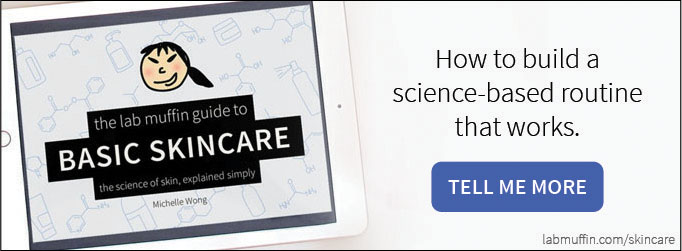
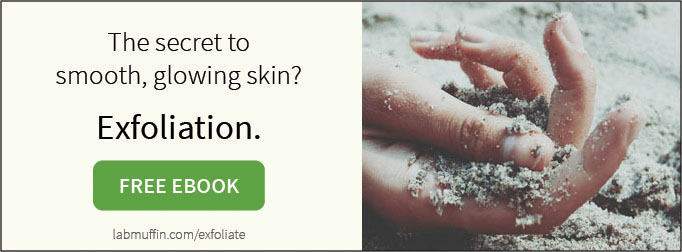


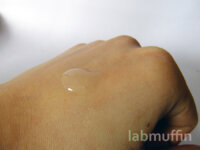
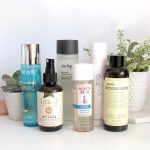
I love how you simplify the science behind all these ingredients, Michelle. xx
sheergloss
Hi Michelle, this is a very good summery you have put togehter, I like it!
Maybe to add from my side: most probably 99% of all Hyaluronic Acid used in cosmetics are made by fermantation, as this is much cheaper than extraction from rooster combs. I used to work in a company were we made HA from rooster combs, but this has stopped since many years, due to the higher costs and due to the fact, that nobody in Europe wants to use ingredients that are made from animals.
Another thing to add: on the epidermis we have enzymes, that destroy hyaluronic acid quite quickly and “cut” them into smaller pieces. Those enzymes are called hyaluronidases. However, there are companies they also sell cross-linked hyaluronic acid, which is not (or only slowly) cleaved by hyaluronidases and stay longer on the skin surface. Therefore they hydrate the upper layers of the skin for a longer periode.
Do you know what happens to the HA spheres after they’ve done their job in the skin?? I’m assuming the body just absorbs them…?
They probably don’t get absorbed since they’re quite large – I’d guess that they either wear off, or they shed along with the skin cells they’re attached to.
I’ve book-marked it for later!
I absolutely enjoy your posts so much. Informative and scientific without so much busy looking information!
Hi Michelle!
This was very helpful! Especially the part about the different sizes, it’s always interesting to read about the nitty gritty 🙂
I’m able to use products that have it, but when I use products that seem to have a lot of it (like those hada labo toners) I’ve experienced dryness.
I was wondering if you’ve ever heard about humectants like hyaluronic acid having the adverse affect and being capable of drawing moisture out of the skin?
I’ve heard of it, but I’ve failed to find many studies on this…
Could you review these studies? From what I’ve read here, you should NEVER, EVER use hyaluronic acid
https://www.oumere.com/search?q=hyaluronic+acid
I don’t think she’s very good at assessing the literature – I’ve talked about her stance on vitamin C before here: https://labmuffin.com/mythbusting-vitamin-c-serums-bad/
I dont really trust her either… but in this case the studies were conducted herself and they seemed quite convincing to me.
Being a scientist myself, I really appreciate your analysis and the effort you put into your website.. and I always love to see a good, refutation smack-down, so I just went over there and read some of her articles… And had SUCH a good laugh. She talks SUCH a big game about how science-centric she is, and everybody else is just marketing-centric and trying to fool you…
I’m a political scientist, but whether it be the natural or the social sciences, the only basic difference is in what the evidence is that’s studied. Bloggers all know that footnotes make them them look authoritative, and that most people reading blogs aren’t there to be assigned footnoted homework, so hucksters will say they say what ever they want you to believe, and never mind if what’s footnoted is even a credible or representative authority, in the first place.
But it’s in the SAYING of what their tables of authorities say, the summarizing, that there’s opportunity for the reader, without all the homework of digesting the footnotes, to at least determine if the blogger sounds serious and scientific, worth the time to check the footnotes, or like a lazy huckster looking for fools to throw cash at them.
Analogies are not evidence, and stringing unrelated or farcical ones together to try to prove a point or set a precedent isn’t science, it’s (really low quality ) rhetoric.
Her conspiracy theory cosmetics crusades against the marketing of the cosmetics industry sucking everyone – and plays off of the abundant truth in that to build her own, cheap marketing campaign of pretending to be science-centric.. Give the suckers what they want.
Maybe she can develop a line of Trump banded orange face paint.
Fantastic read as always Michelle.
Thanks so much!
Do you recommend any good products with hyaluronic acid?
I’ve added recommendations to the bottom of the post 🙂
i love your blog! do you have any recommendations for amounts of HA to use in DIY serums or creams? i have a batch of HA, but am not sure how to use it
I think the recommended amount is usually 0.1-2% of the dry powder – it’s a very powerful product and can goop up pretty quick!
I had NO idea it could come from roosters! I am a vegetarian so I will be looking out for this! Thanks!
I’m hoping you can clear something up about HA. If it pulls moisture into the skin from the atmosphere, what happens to those of us getting hit with winter? With no moisture in the air is it drawing from deeper level of the epidermis?
fro kylie: yes, so thats why sometimes too much hyaluronic acid can actually dry out ur skin, so u should moisten w/ water before putting on
If I’m looking to purchase a product containing hyaluronic acid, how am I to figure out if the HA product contains the high or low molecular mass composure? Would there be specific wording on a box or product’s ingredient list to look for that would allow me to distinguish the two?
Thanks Michelle!
“Hyaluronic acid” usually means high molecular weight whereas “sodium hyaluronate” usually means lower, but you’d have to ask the company to make sure.
Perfect! I’m stuck between Peter Thomas Roth and Perricone. So many choices any preference between the two?
PTR:
https://www.amazon.com/Peter-Thomas-Roth-250-V%C3%ADz-1000/dp/B001CBDJ4K
http://www.ulta.com/water-drench-hyaluronic-cloud-serum?productId=xlsImpprod770038
Perricone MD:
http://www.ulta.com/hyalo-plasma?productId=xlsImpprod12521167
I’d personally go for PTR because I don’t like the feel of dimethicone-rich skincare.
I love hyaluronic acid – I use Now Hyaluronic Acid Firming Serum and it’s fantastic, also contains aloe and green tea. But I layer it over a hydrating spray to give it even more moisture to hold onto, and follow with a moisturizer to seal that moisture in and keep it from evaporating. Fantastic stuff 🙂
Thank you! 🙂
Can Hyaluronic acid be applied on the under eye area?
Hi Michelle, I am trying to use rose water, thermal water and hyaluronic acid for my dehydrated skin, followed up with moisturiser, but I noticed after I bought the HA serum that it contains jojoba oil. I normally like to mist my face with thermal water right before I apply my moisturiser as my face dries out very quickly but does the jojoba oil in the HA serum mean I can’t apply thermal water between my serum and moisturiser? Thanks for your help!
I’ve been using Hyaluronic Acid for a while. So far I am very pleased with the Lady Soma Renewal Serum (which contains hyaluronic acid) with it. No funky smell or stickiness. I have a combination skin type: dry and oily in t-zone area. My trick is to apply when my face is still wet when it feels really dry cause of the dry weather in California or apply right before.
It helps my skin hydrated better this way without breaking-outs.
DIY LMW Hyaluronic Acid Powder, anyone?
I can’t remember where I found this product linked, or maybe I just stumbled across it.
https://www.amazon.com/Hyaluronic-Acid-Super-Molecular-Weight/dp/B01GC2HTX0
Thoughts Michelle? I know you’re not opposed to a little DIY from your DIY Vitamin C Serum.
Actually, you guys in the U.S. also have the option to by Ultra-Low MW powders.
Lotioncrafter sells both < 6kDA and < 8kDA Hyaluronic acid at respectable prices.
http://www.lotioncrafter.com/hyaluronic-acid-ulmw-less-than-6-000-daltons.html
Having troubles finding similar products over here in Australia and it becomes a bit expensive shipping it over when the postage ends up being the same price as the purchase.
The worst thing about Australia! 🙁
FINALLY someone who doesn’t think it’s spiders or snakes
That sounds really interesting! I wonder how hard it is to keep it water-free?
hmm I’m not sure, tbh I never gave it much thought but I imagine so long as the container is airtight I can’t see what the problem would be. Considering the enormous amount of water it can bind with, it’s not as though it will reach saturation point anytime soon from the tiny number of molecules that become available from a jar’s volume of air every time you open it.
Hello Michelle, thanks for so many useful information given from your blog. I have recently came across Cassia Angustifolia Seed which claimed to be outperform HA. Since everyone will react differently to different ingredient i was thinking no harm rying out but the price is so high. May i know in your opinion what do you think about this ingredient? Also there are some noise about HA might draw out moisture from within instead if your environment is too dry for HA to attract moist, what do you think about that? Thanks in advance!
I don’t think I’ve come across that ingredient before unfortunately.
I think it’s fine if you follow up with an occlusive 🙂
I was wondering how you would know what source your HA came from? A lot of companies don’t state if it is from roosters or fermentation.
Unfortunately you’d have to ask the company.
What’s your opinion on using HA in a serum, so without occlusives?
It’s said that in dry climates it can suck moisture out of the dermis, which then evaporates.
Kinda sucks, in humid climates I feel I don’t even need humectants lol, so what’s the point then>
Hi Michelle, I’ve read your blog and watched Dr Devin Lim’s video, both of you informations are very useful..since you mentioned that HA can only penetrate to the lower epidermis does this mean the 7 skin method (layering toner 7 times) by K-Beauty is a big waste?